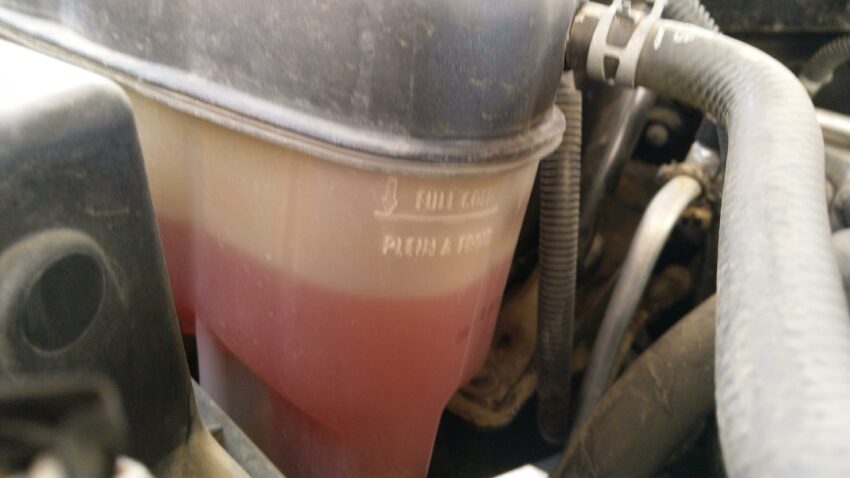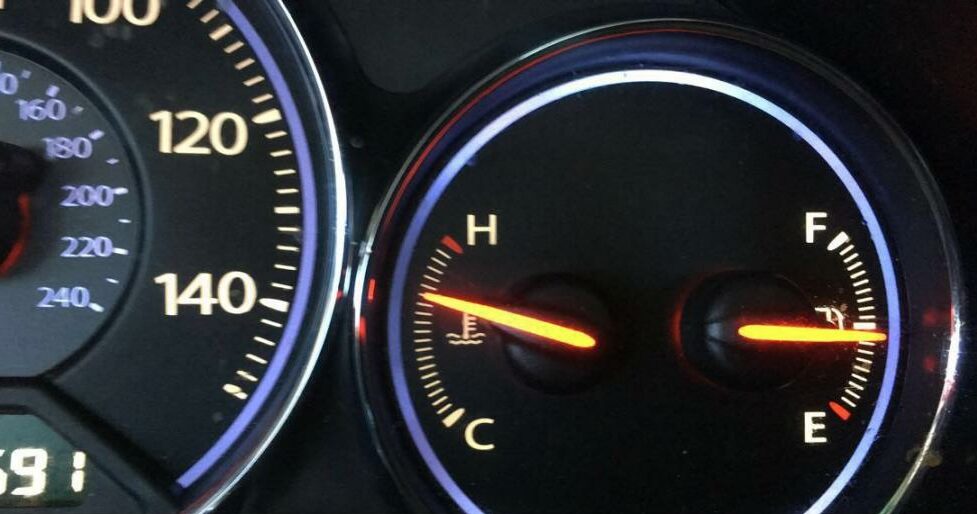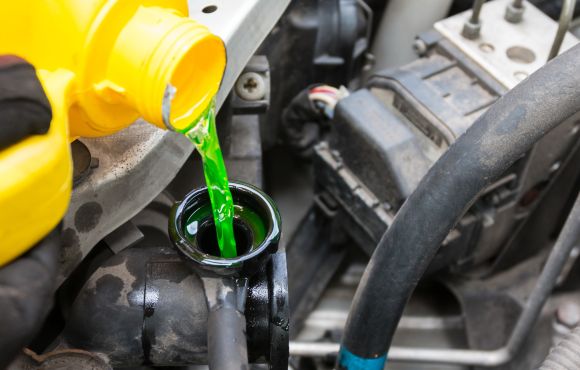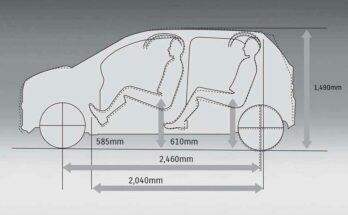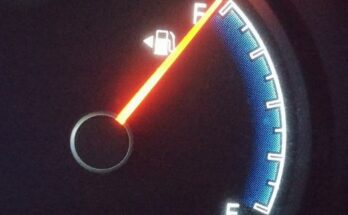As a mechanic, I usually recommend my customers do a radiator flush every once in a while.
“Can I do it myself?” they asked. “No, it’s a very complicated process, let me handle that” I said, and the money came.
I’m joking; you can totally do a radiator flush at home. And knowing when your car needs a radiator flush is the very first step of doing so.
But before moving on to 5 signs your car needs a radiator flush, let’s dig into the basics.
What does radiator fluid do?
Long story short, your car engine runs hot, and radiator fluid (also known as coolant or antifreeze) will help it to cool down. “C’mon engine, inhale, exhale, control your temps”. If radiator fluid is a therapist, it’ll make a good one. Besides, radiator fluid also has other benefits for your car’s radiator.
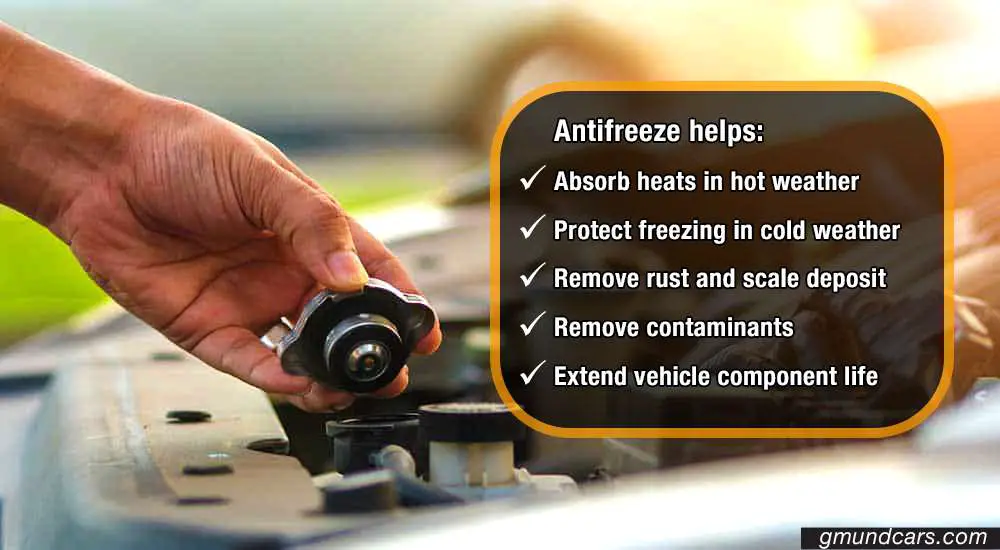
Why should you do a radiator flush?
Kick the bad stuff out of the car cooling system
Over time, there will be some bad boys that block the flow of radiator fluid inside your car cooling system, such as:
⦁ Rust
⦁ Scale deposits
⦁ Contaminants
Those little things will make engines overheat and cause severe damage to them.
With special formulas, radiator flushes will dissolve and dislodge those scraps and give the cooling system back to its best form.
Prevent corrosion
With added corrosion inhibitors, a coolant replacement will decrease corrosion caused by acidic reactions inside your engine. Those reactions happen mainly because the fluid gets too old and too acidic.
Lubricate the water pump
The water pump’s function is to circulate coolant through the coolant system, into the engine, and back to the radiator. Rust built up inside the water pump will decrease its efficiency. A radiator flush will blow that away!
Prevent leak
When you flush a radiator, always inspect the cooling system (thermostat, radiator, hoses, and belts). Why should you do that? To check for leaks and other problems that may cost you a bunch of money in the future.
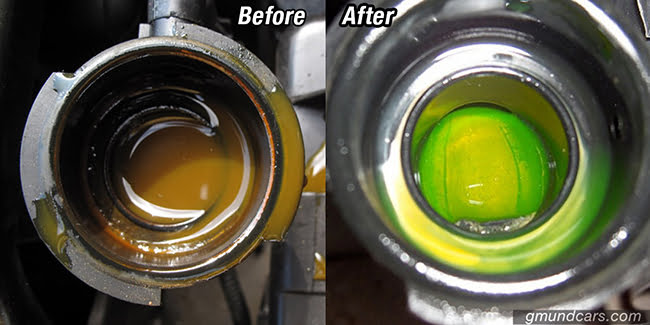
How do you know when you need to flush the radiator?
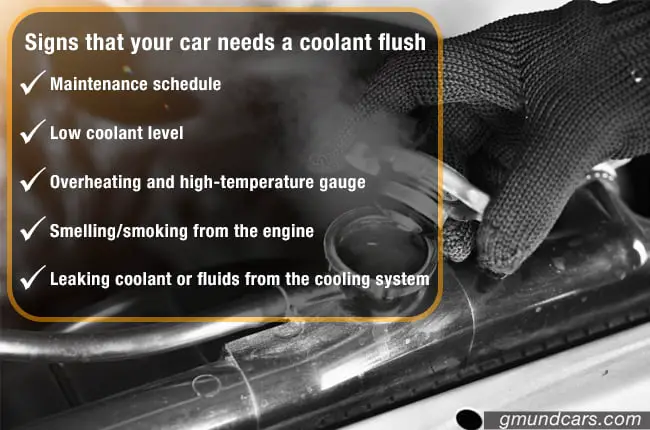
Maintenance schedule
This is the best-case scenario; you act proactively! Don’t wait until your car has some ominous signs. At that time, it’s maybe already too late, and there is probably something severely wrong with the engine. Which definitely will hurt your wallet.
But the question is: how often should you flush the radiator? I personally say annually. I know some mechanics say every 5 years, some say 3 years. In fact, if you do it yourself, it won’t cost you much. So, better safe than sorry. Here’s my rule of thumb, flush your radiator annually or after 10,000 miles.
Low coolant level
To check your coolant level, first, you have to locate the coolant reservoir. This should be very easy to find. Open your engine bay and look for the label “Coolant.” If you can’t find it, take a look at your car’s manual. On the side of the tank, you can see the “Low” and “Full” marks. The coolant level is low when it is below or nearly below the “Low” mark. Note: Never open the coolant cap when the engine is hot.
Low coolant level doesn’t always mean that you must flush the radiator. Sometimes, all you need to do is add more coolant until the level reaches the “Full” mark. However, if your coolant level is low and you don’t remember the last time you flush your radiator, just do it right away!
High-temperature gauge
When the water temperature gauge reads hotter than normal, that indicates your engine is overheating. In fact, when customers bring their cars because of overheating engines, “ read hotter than normal” usually means “read near maximum.” If that happens to your car, plus the coolant level is around the “Full” mark, flush the radiator before things get worse.
Other signs of an overheating engine are:
⦁ Ticking or thumping noise
⦁ Reduced engine power
Coolant leaks on the ground
When this happens, flush the radiator asap. Of course, a flush is never enough in this situation. It’s only the first step to locate the leak to fix it. Also, if you can smell a sweet odor, it’s another sign of a coolant leak.
Note: Clean the coolant on the ground immediately. This chemical is just like candy. It smells sweet, tastes sweet, except that animals will die if they drink it.
How long can I ignore those signs?
As long as you want to! The only risk you bear is buying a whole new engine, not really a big deal. Ok, I was just being sarcastic. Driving with those symptoms is definitely not very pleasant. At the end of the day, you have to pay a much more expensive repair bill for your mechanic.
Guess what, it’s not the worst! If you don’t flush your radiator and fix the leaks, coolant leaks will be more severe. Your dog can accidentally drink it and die. All because you do not flush the radiator. As I said before, it’s always the best when you act proactively. Remember to do it annually or after 10,000 miles.
Contributed by: Frank Wisner

CarSpiritPK welcomes Guest Posts. If you have the ability to generate quality content and can write some relevant and useful piece of information to be shared with our readers, feel free to contact us at: [email protected] Send you emails titled as (Guest Post submission)

